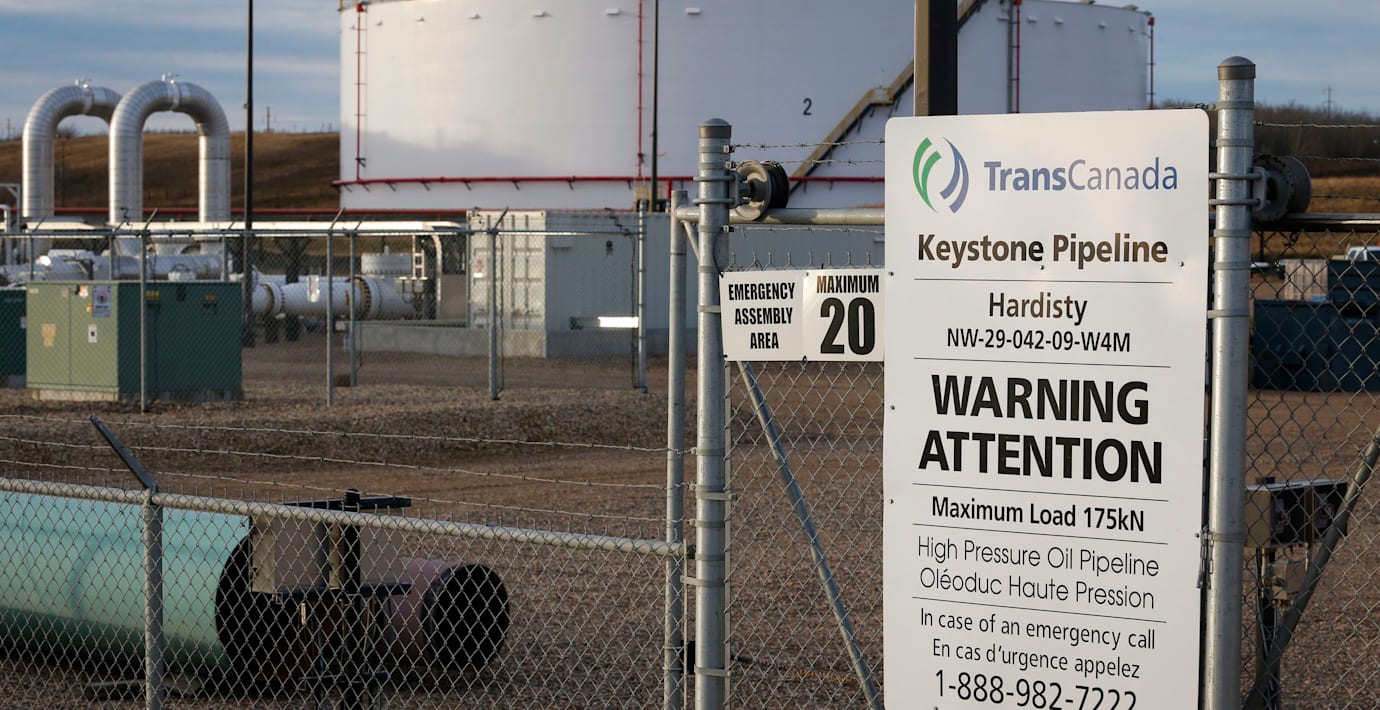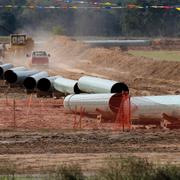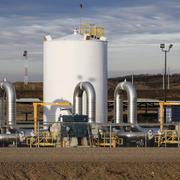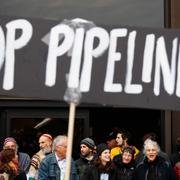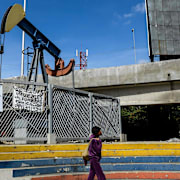Wikipedia (en)
The Keystone Pipeline System is an oil pipeline system in Canada and the United States, commissioned in 2010 and now owned solely by TransCanada Corporation. It runs from the Western Canadian Sedimentary Basin in Alberta to refineries in Illinois and Texas, and also to oil tank farms and an oil pipeline distribution center in Cushing, Oklahoma. The pipeline came to a greater prominence of attention when a planned fourth phase, Keystone XL, attracting growing environmental protest, became a symbol of the battle over climate change and fossil fuels, and in 2015 was rejected by then President Barack Obama. On January 24, 2017, President Donald Trump took action intended to permit the pipeline's completion.
Three phases of the project are in operation. They are:
The Keystone Pipeline (Phase I), delivering oil from Hardisty, Alberta, over 3,456 kilometres (2,147 mi) to the junction at Steele City, Nebraska, and on to Wood River Refinery in Roxana, Illinois, and Patoka Oil Terminal Hub (tank farm) north of Patoka, Illinois, completed in June 2010.
The Keystone-Cushing extension (Phase II), running 468 kilometres (291 mi) from Steele City to storage and distribution facilities (tank farm) at Cushing, Oklahoma, completed in February 2011.
The Gulf Coast Extension (Phase III), running 784 kilometres (487 mi) from Cushing to refineries at Port Arthur, Texas was completed in January 2014, and a lateral pipeline to refineries at Houston, Texas and a terminal will be completed mid-2016, going online the following year.
The proposed Keystone XL (sometimes abbreviated KXL, with XL standing for "export limited") Pipeline (Phase IV) would essentially duplicate (though along a shorter route and with a larger-diameter pipe) the Phase I pipeline between Hardisty, Alberta, and Steele City, Nebraska. It would run through Baker, Montana, where American-produced light crude oil from the Williston Basin (Bakken formation) of Montana and North Dakota would be added to the Keystone's throughput of synthetic crude oil (syncrude) and diluted bitumen (dilbit) from the oil sands of Canada. After more than six years of review, President Barack Obama announced on November 6, 2015, his administration's rejection of the fourth phase. On January 24, 2017, President Trump signed presidential memoranda to revive both the Keystone XL and Dakota Access pipelines. The memorandum is designed to expedite the environmental review process.
The first two phases have the capacity to deliver up to 590,000 barrels per day (94,000 m3/d) of oil into the Mid-West refineries. Phase III has capacity to deliver up to 700,000 barrels per day (110,000 m3/d) to the Texas refineries. By comparison, U.S. oil production averaged 9,400,000 barrels per day (1,490,000 m3/d) in first-half 2015, with gross exports of 500,000 barrels per day (79,000 m3/d) through July 2015.
